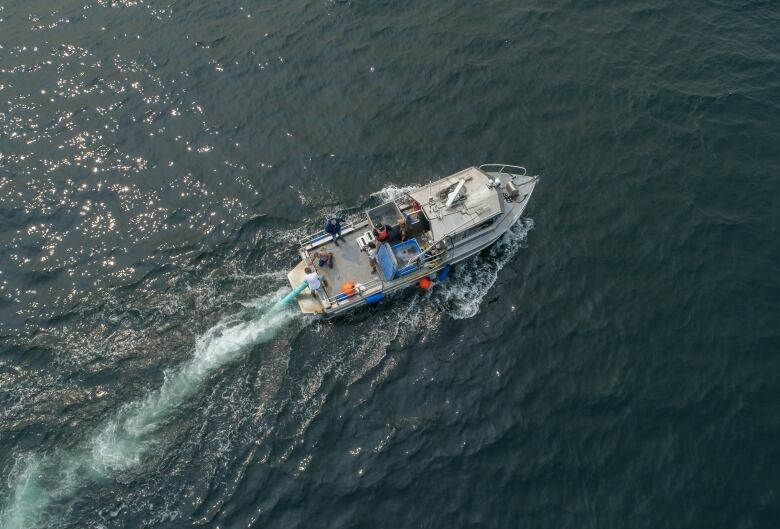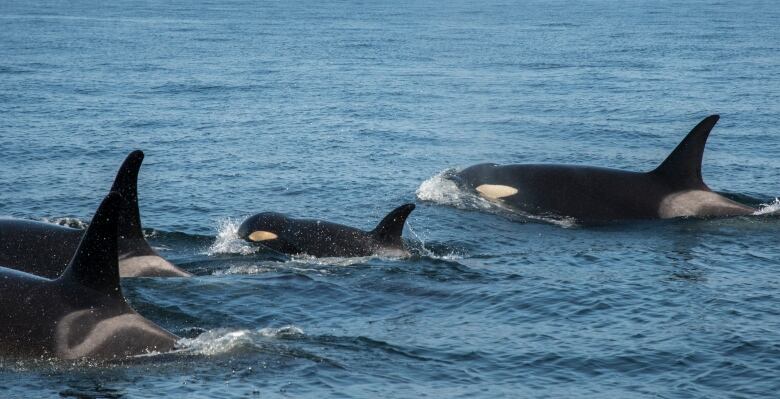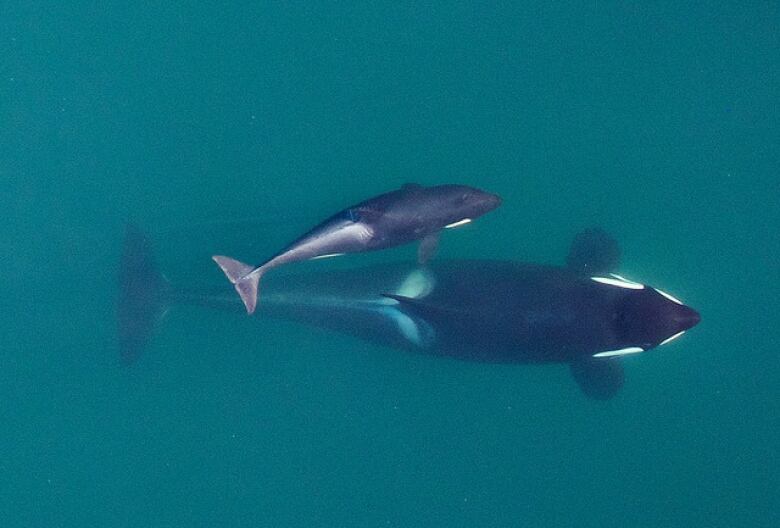'Slogging' killer whale J-50 gets live fish delivery in latest attempt to save her
'This type of thing has never been tried before,' says biologist on effort to help 3-year-old orca

Efforts to help a malnourished and endangered orca off the B.C. coast hit new uncharted waters yesterday, as U.S. biologists tried to feed the killer whale known as J-50 live chinook salmon off a boat.
The "emergency response" to help the young whale already included a novel antibiotic treatmentby dart at sea last week.
Over the weekend, the U.S. National Oceanic and Atmospheric Administration and the Lummi Nation tried to deliver her food directly both for nourishment and as a possible way to give medication in the future.
"This type of thing has never been tried before and there was lots of potential things that could potentially go awry. So, we were very, very pleased that we were able to do this," said NOAA wildlife biologist Brad Hanson.

Feeding a wild endangered animal is not a step taken lightly.
"We realize that there is the potential for habituation," he said. "We felt like it was necessary to take this sort of step in order to try to see if we could try to improve the animal's condition."
The operation was a logistical success, he said, in terms of locating the pod and delivering fish through a tube in strong currents but NOAA isn't sure whether the three-year old whale ate anything.
Biologists try to feed J-50 live chinook salmon
'Slogging along'
J-50, part of the endangered southern resident killer whale population, has always been small, but officials became acutely concerned when overhead images revealed she'd lost about 20 per cent of her weight.
This weekend, she struggled in strong tidal currentsand didn't seem playful, said Hanson.
"Yesterday and the day before were a bit worrying because it just seemed like she was essentially slogging along and not necessarily able to keep up with the rest of the whales."
The response team, including a rotating group of veterinarians, don't know why she's deteriorating.
The broad-spectrum antibiotic was given last week to help her fight a bacterial infection, in case that's the cause.
It's even possible that a "foreign body" e.g. ingested plastic or other debris is causing a digestive problem, said Hanson, but that's not something they can detect.
Fisheries and Oceans Canada said it's watching closely for results of the breath and fecal samples gathered.
"As the information comes, in they're able to start ruling out some issues and start focusing on potential others," said Sheila Thornton, DFO's lead killer whale researcher.

Is she starving?
Arguably, the biggest threat to the survival of the 75 southern resident killer whales left is the dwindling supply of their primary food source chinook salmon.
In the case of J-50, she's doing so much worse than the rest of her family group, the veterinarians responding don't think starvation is the sole issue.
At this point even when fish are there NOAA isn't sure she's eating.
When the rest of her pod was darting after salmon, she didn't keep up, and didn't respond in speed or direction when the live hatchery chinook were delivered, said Hanson.
Still, chinook salmon supply is key to the southern residents survival.
The group hasn't had a successful birth in three years, and Ken Balcomb of the Centre for Whale Research points to "starvation episodes" when the powerful predators don't have enough to eat.
Fisheries and Oceans Canada said some Fraser River chinook stocks are of particular concern.
"That's why we've put in place some significant restrictions on both commercial and recreational harvest this year," said Andrew Thomson, DFO's regional director of fisheries management.
Some key orca foraging areas are also closed to recreational harvest, he said.
Attempts to feed J-50 directly aren't happening or permitted in Canada at this point, but DFO said it's watching NOAA's trials closely.














_(720p).jpg)


 OFFICIAL HD MUSIC VIDEO.jpg)
.jpg)



























































































